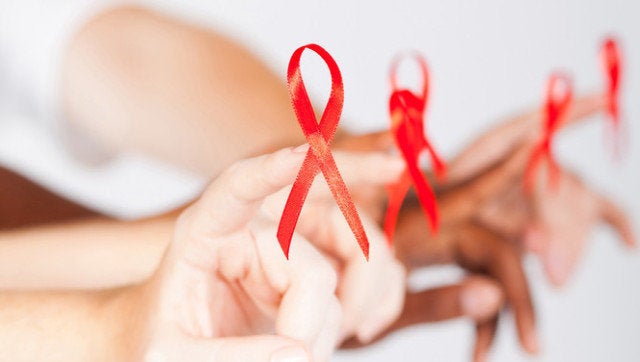
At the XIX International AIDS Conference this week in Washington, D.C., Americans should be proud of what we have done to fight HIV/AIDS around the world, and how, together, we are turning the tide against an epidemic once thought to be invincible.
Men, women and children have a second chance thanks to tremendous funding commitments and international collaboration over the last decade. One woman I met in Kampala, Uganda named Concy Acayo demonstrates how efforts such as the President's Emergency Plan for AIDS Relief (PEPFAR) can be life changing.
I met Concy, a mother in her late 30s, in April while leading a bipartisan Congressional delegation to Uganda. She shared her moving story with our group and a dozen other HIV positive women, and we sat just a few feet away from the clinic that saved her life. About ten years ago, Concy's battle with HIV left her bedridden and unable to care for her family. Then, she began accessing treatment at a PEPFAR-funded HIV clinic. Her health gradually improved. She was also given prenatal and proper delivery services which enabled her children to be born free of HIV.
Concy embodies what can happen when the United States commits itself to helping people in need. Through PEPFAR, as of last year the U.S. supported nearly 4 million people on treatment, up from 1.7 million in 2008. The percentage of pregnant women with access to HIV testing and counseling climbed from 8 percent in 2005 to 35 percent in 2010, according to a progress report from the World Health Organization, UNAIDS and UNICEF last year.
Infection rates have plummeted worldwide as well, creating a brighter future for millions of families. The same report found that about 2.7 million people acquired HIV infections in 2010, a decline from 3.1 million in 2001.
The benefits of the investments in HIV/AIDS work have also yielded generous returns in other areas of health services, particularly for women. Many countries, including Uganda, have expanded services beyond HIV testing and treatment to integrate family planning services and maternal health care.
Even with these achievements, there's a tough road ahead. With a lackluster economy and pressing domestic issues, we risk backtracking on all of our hard-earned progress. For example, Uganda, where Concy lives, is often hailed as one of Africa's early success stories. However, a government report shows the prevalence of HIV in the country actually increased from 6.4 percent in 2004 to 7.3 percent in 2011. This shift re-affirms the urgency to continue our global commitment to eradicating the disease.
Continuing the momentum means staying ahead of the disease and reaching the most vulnerable populations such as the ultra-poor and, in too many places, women and girls. We know that 50 percent of the people eligible for treatment lack access to antiretroviral therapy, and children have the poorest access to these drugs. At CARE, which fights global poverty by empowering women and girls, we have seen women -- particularly young women -- remain disproportionally at risk of contracting the disease. The World Health Organization reports that women constitute 60 percent of people living with HIV in sub-Saharan Africa.
The PEPFAR-funded clinic where I met Concy is a case in point. Women make up 63 percent of the people served. Most of them are single, widowed or elderly with minimal schooling and no source of regular income. That's why, just beyond the half dozen hospital beds and testing equipment, sits a day care, a basket-weaving factory and small community center. Here CARE has helped launch village savings and loan associations whose members pool their money to start small businesses. The groups, which are about 70 percent women, help disseminate messages about preventing the spread of HIV, from mothers to children or partner to partner.
With renewed hope, Concy continues to fight against HIV. She has a wide smile when she tells us about her participation in a savings group and how she launched a successful business selling food. Last year, she became a first-time homeowner after using her earnings to buy a plot of land and build a small home for her family. Something tells me Concy's smile will light her face for many, many years to come.
Dr. Helene D. Gayle is president and CEO of CARE, the global poverty-fighting organization. Dr. Gayle spent 20 years with the Centers for Disease Control, focused primarily on combating HIV/AIDS. Dr. Gayle then directed the HIV, TB and Reproductive Health Program at the Bill & Melinda Gates Foundation. She will be co-chairing a panel with former First Lady Laura Bush and activist Aung San Suu Kyi on HIV/AIDS and women at the conference.